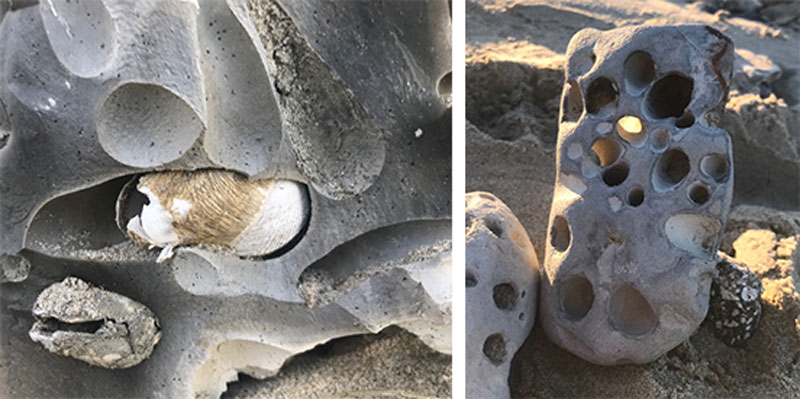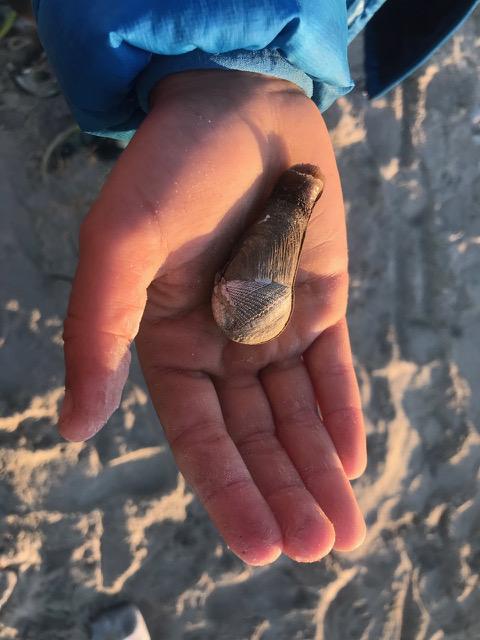
This week, a series of large winter storms delivered hundreds of strange rocks riddled with perfectly smooth drill holes. A treasure trove to curious beachcombers, begs the question, “Who or what made all those holes?!”
The holes are the work of industrious molluscs called piddock clams or, more commonly, boring clams. Some 16 different species of not-so-boring clams call Monterey Bay home and they play an essential role in the shale and mudstone reefs lining the coastlines here. The clams bore through all kinds of rock, (except granite), to create rocky refuges for themselves and cozy condominiums for all sorts of other critters including snails, sea stars, polychaete and peanut worms, brittle stars and gumboot chitons. Even little baby hermit crabs take up residence in abandoned piddock clam holes until they reach a size large enough to find a more suitable mobile home.
In the process of burrowing, these clams weaken the upper rocky reef layers- when a big winter storm comes along, chunks of reef slough off. This creates a constant supply of new surfaces for even more clams to find footholds and keep the boring cycle going.

The mystery is, how in the world do they bore through rock? When we look closer, we discover clues.
The bottom portion of their shells
have rough ridges with teeth-like serrations. The serrations allow the clams use to twist and grind back and forth into the rock.
Like other clams piddocks begin life in plankton, tasting and smelling the water for like-minded kin. When they find an appropriate smelling spot, they spread out their broad single foot onto the rock and start to grow their special shells. They burrow until they reach adulthood at about 1 – 6 inches depending on the species. Once ensconced in the rock, they metamorphose into adults, secrete a material over their single trusty foot and place their traveling days behind them.
(Here’s another fun fact about the clams secreted material: it was so fascinating to civil engineer Isambard Kingdom Brunel, he used a similar strategy in building the first tunnel under the Thames river in London).
In exchange for this sessile lifestyle, they have a safe and snug abode where they use one siphon to pump and filter food out of the water and the other siphon to pump out their waste. Thus, entombed they live long peaceful lives for up to 20 years or until the next big storm sets them adrift.
A (w)HOLE New Light
These clams are not only edible but also bioluminescent. Pliny the Elder, the renowned ancient Roman author and naturalist, once commented that those who ate these clams have glowing mouths.















